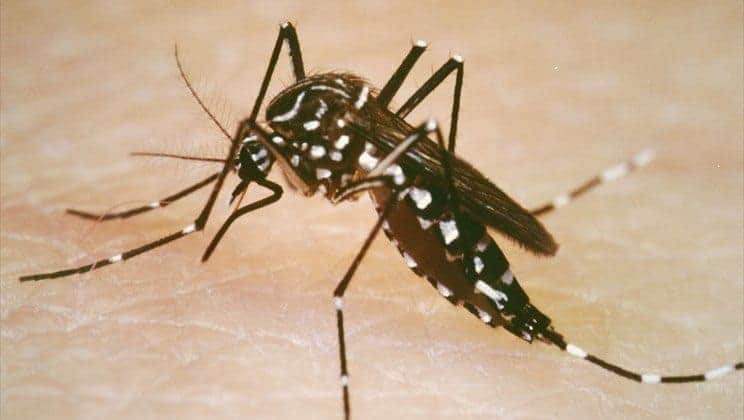Jeffrey Powell, Ph.D., is a professor of ecology and evolutionary biology and an adjunct professor at the Yale School of Public Health and the School of Forestry and Environmental Studies. He has conducted mosquito-related research around the world, including in Brazil where the Zika virus has spread rapidly. Much of his research focuses on DNA analysis of Aedes aegypti mosquitos, a vector responsible for a host of diseases, including Zika. He also has a long history of Drosophila (fruit fly) genetics research.
Describe the most important characteristics of the Aedes aegypti mosquito.
JP: It has a close association with human habitats, breeds in lots of different kinds of containers, prefers humans for blood meals and, importantly, is a day-time biter unlike many other species that are primarily active at night.
What is its role in the spread of the Zika virus?
JP: It is not currently known if this species is the primary vector of Zika, although it is safe to say it is amajor culprit. Another closely related and co-occuring species, Aedes albopictus, may also play a major role. It is currently unknown how
What are some of the other diseases already spread by Aedes aegypti? Is it likely to transmit others in the future?
JP: Ae. aegypti has long been a major vector of viruses causing human diseases. Originally it was yellow fever (hence its common name, “the yellow fever mosquito”) and now dengue and Chikungunya, both of which are rampant in the tropics and subtropics today. Zika is only the latest in a line of aegypti-borne viruses. No doubt more will be coming along.
What makes this mosquito so capable at disease transmission?
JP: Its preference for humans as a blood source and viruses replicate extremely well in this mosquito.
Describe how the range of Aedes aegypti has changed over the past 50 years.
JP: The major change in distribution of aegypti occurred during and after a campaign to eradicate aegypti from the New World. This started after World War II and was partly successful with aegypti being eliminated from large parts of South America and Mexico. The campaign was stopped around 1970, and aegypti is right back where it was.
One curious note is that aegypti was not reported to be in California until 2013. We have looked at the genetics of California populations and they do not seem to be a new introduction. We suspect they were in California for some time, just under the radar of detection. This simply points out that if relatively rare and not actively causing any diseases, the presence of the species may go undetected or unreported.
This mosquito is now found in many southern states in the United States. Is its range likely to spread north? Where might it be in 20 years? What is the role of climate change in this?
JP: It is in the southern part of the United States, Florida and along the Gulf Coast, across Texas, New Mexico, and Arizona (And now California). I do not believe it is likely to change its distribution much in the next 20 years. But Ae. albopictus, which can transmit most of the same viruses as aegypti, is now much further north with permanent breeding populations in New Jersey. We may have permanent populations now in Connecticut; we need to wait until spring to see if it overwintered.
Does the word “aegypti” in its name imply that this species originally came from that region of Africa?
JP: Ae. aegypti did originally came from Africa where its ancestral form can still be found breeding in forests and preferring animals for blood meals. Some time ago (we speculate 4,000 to 6,000 years) it became “domesticated,” evolved to live in human habitats and breed in water stored by humans. It was this domestic form that got on slave ships in the 1500s and was introduced into the New World. Later, probably 1890s, it got into Asia. The name refers to the fact the first specimens described came from Egypt.
Are repellents particularly effective against this mosquito?
JP: DEET remains the gold standard repellent and it is effective against aegypti.
How does this species of mosquito compare to others in terms of its aggressiveness.
JP: It is aggressive, but more distinctive is its habit of being a day-time biter. Not many mosquitoes are found taking blood meal in the middle of the day, but aegypti is happy to.
You have described Aedes aegypti as “elegant.” How so?
JP: Just take a look at the photo (see attached). Is this not elegant??
In terms of better controlling this mosquito, is there anything on the horizon that offers hope?
JP: Insecticides remain the best presently. On the horizon are genetic methods of manipulating mosquito populations, either to reduce their size or to render them less capable of transmitting pathogens.
To learn more about Dr. Powell’s research, visit his faculty page athttp://publichealth.yale.edu/people/jeffrey_powell.profile


